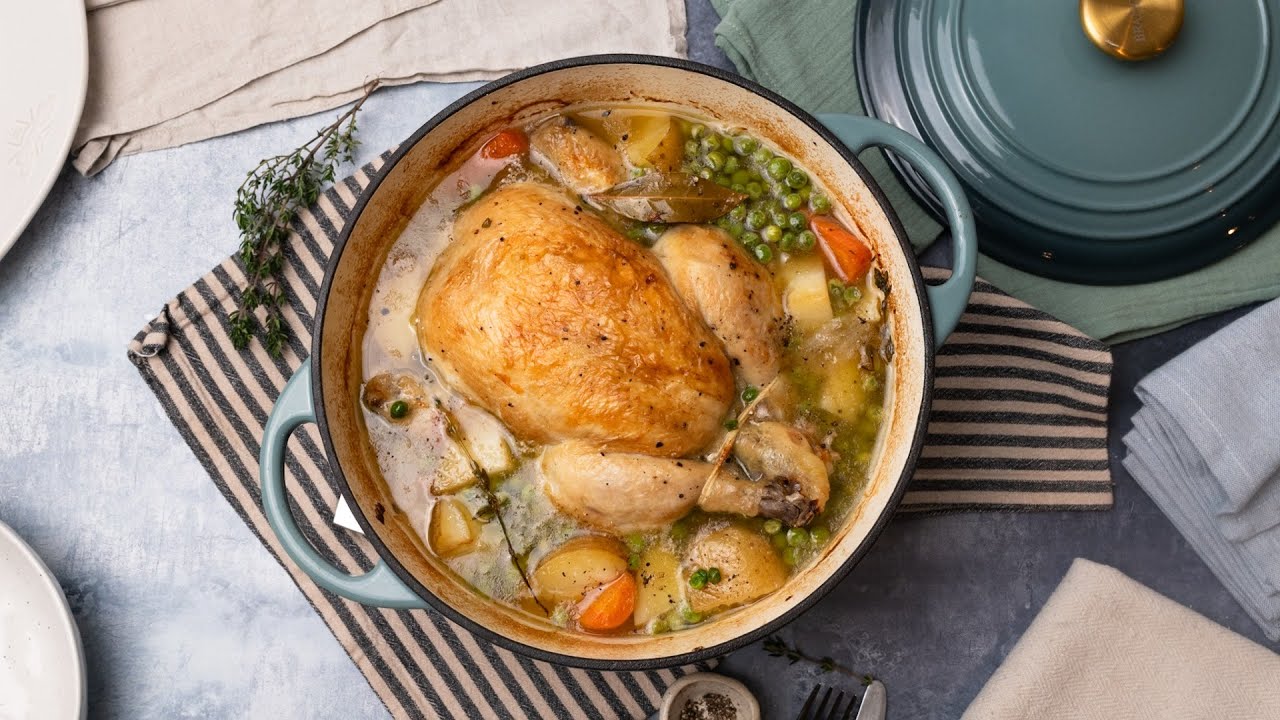In the realm of culinary arts, choosing the right cookware can significantly influence the quality of your cooking. Among the myriad of options available, the debate between the cast iron braiser vs enamel coated steel is quite prevalent. Understanding the nuances of each can help you make an informed choice that suits your cooking style and needs.
Both cast iron braiser and enamel coated steel have their unique advantages and can be seen in many professional kitchens. As a kitchen professional or an avid home cook, it’s essential to understand the differences to optimize your cooking experience. Let’s delve into the characteristics, benefits, and considerations of each type.

Understanding the Basics
What is a Cast Iron Braiser?
A cast iron braiser is a versatile piece of cookware that is renowned for its ability to retain heat and provide even distribution. It is perfect for slow cooking, braising, and even baking. The heavy-duty construction ensures durability and longevity, making it a staple in many kitchens. Cast iron’s natural non-stick properties improve with use, offering an excellent cooking surface over time.
What is Enamel Coated Steel?
Enamel coated steel cookware is made by covering steel with a layer of enamel. This combination offers a lightweight option compared to cast iron while still providing a durable cooking surface. The enamel coating is non-reactive, meaning it won’t alter the taste of acidic foods, making it ideal for a variety of recipes.
Comparing the Two: Key Differences
Heat Retention and Distribution
Cast iron braisers are exceptional at heat retention and even heat distribution. This makes them ideal for slow cooking methods, such as braising and stewing. On the other hand, enamel coated steel heats up quickly but does not retain heat as effectively as cast iron. This can be beneficial for quick cooking methods.
Weight and Maneuverability
One of the main differences between the two is weight. Cast iron is significantly heavier, which can make it cumbersome for some, but provides stability on the stove. Conversely, enamel coated steel is lighter, making it easier to handle, especially for those who prefer a more agile cookware option.
Durability and Maintenance
Both materials are durable, but they require different maintenance practices. Cast iron needs to be seasoned regularly to maintain its non-stick surface and prevent rust. You can learn more about preventing rust on cast iron in this guide. Enamel coated steel, however, does not require seasoning and is typically easier to clean, though it can chip if not handled carefully.
Which is More Versatile?
The versatility of your cookware can greatly impact your cooking flexibility. Cast iron braisers can be used on the stovetop, in the oven, and even on the grill. For indoor grilling with a cast iron braiser, check out this resource. Enamel coated steel is also versatile but not as heat-tolerant as cast iron, which may limit its use in high-heat applications.
Cost Considerations
When it comes to price, cast iron braisers tend to be more expensive due to their durability and heat retention properties. Enamel coated steel offers a more budget-friendly option while still providing good performance for everyday cooking.
Environmental Impact
Both materials have different environmental impacts. Cast iron is made from natural materials and can last a lifetime, reducing the need for replacement. Enamel coated steel also has a long life, but the enamel coating process can involve more chemicals.
Cooking Techniques
Best for Braising
Cast iron braisers are undeniably the best option for braising due to their superior heat retention. This allows for a slow and even cooking process, which is key for tender meats and flavorful sauces.
Quick Cooking
If you often engage in quick cooking techniques, enamel coated steel might be more suitable due to its rapid heating properties. This makes it ideal for stir-frying and sauting.
Cleaning and Maintenance
Maintaining your cookware is crucial for ensuring longevity. Enamel coated steel is generally easier to clean, often being dishwasher safe. Cast iron, however, requires hand washing and regular seasoning. For more on cleaning cast iron, visit this cleaning guide.
Popular Brands
Several brands dominate the market when it comes to these cookware types. For high-quality cast iron braisers, brands like Le Creuset and Lodge are well-regarded. For enamel coated steel, brands like Cuisinart offer excellent options.

FAQs
Is it safe to use cast iron on all cooktops?
Yes, cast iron braisers are compatible with most cooktops, including induction. However, it’s important to lift the pan instead of dragging it to avoid scratching the surface.
Do enamel coatings affect food taste?
No, the enamel coating is non-reactive and will not alter the taste of your food, making it ideal for cooking acidic dishes.
Can I use metal utensils with enamel coated steel?
It’s advisable to avoid metal utensils as they can scratch the enamel surface. Opt for wooden or silicone utensils to maintain the coating’s integrity.
Choosing between a cast iron braiser vs enamel coated steel largely depends on your cooking preferences and needs. Both have their unique benefits and can greatly enhance your culinary experience. For more detailed comparisons with other cookware, like a casserole pot or frying wok, visit this comparison page. Additionally, you can explore the key features and recipes for braisers in this external blog.
This article contains affiliate links. We may earn a commission at no extra cost to you.

